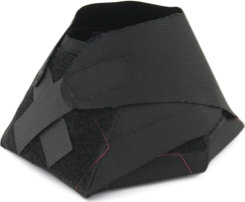I was asked by a local Dressage Organization to film riders working with a Freestyle Consultant in developing individual dressage routines to music. I thought it would interesting so I said I'd do it, setting up early on a Sunday morning at one end of the Dressage Court - by the way, don't call it an arena - and started filming riders as the consultant matched up dressage maneuvers with the music. Right off the bat it was pretty neat as I had a lady rider coming towards me at a long trot to the music of Cherokee Nation by Paul Revere and the Raiders. This lady rider actually does this routine wearing a Indian feather bonnet and buckskins.
Even though the riders, both english and western dressage, rode in contact with their horses - meaning the reins were taunt as opposed to riding on a loose rein as many of us try to achieve - the horses I saw were all in a vertical head position, broke at the poll and nose perpendicular to the ground and the riding I saw exhibited was pretty precise. The riders all demonstrated that they had achieved a good level of communication between themselves and their horses as they went through their leg yields or forward momentum with lateral movement (what I know as two tracking), counter cantering which is riding a circle at a lope on the wrong lead (yes, on purpose), doing turns on the front end and then on hocks, simple and flying lead changes, and showing straightness in riding diagonally from one end of the court to the other. All what anybody would recognize as excellent riding.
So at some level, riding is riding, be it English/Western dressage or trail riding, or even working cows in a sorting pen. Many of us trying to develop communication with our horses where we can move the front end over independently of the back end and vice versa, or getting a lateral side pass (again, two tracking) and are all doing pretty much the same things with our horses.
In the annual Arena Obstacles Challenges I put on, I always have tasks that require much of the same. Many rider and horses who compete in equitation type events do well when asked to demonstrate a 360 degree on the hocks but maybe not so well when asked to retrieve a slicker off a fence and put it on. The reverse is true for the trail riders having not so much difficulty in riding their horses through a rope curtain but are challenged when asking to two track a short distance.
I think what hampers some of us is that we practice what we can do okay on horseback, but neglect the things we don't do well because we have difficulty in making progress on those things and it's natural to avoid frustration or the ever present reminder that we just ain't having success. But it's important to keep at it as it makes us and our horse's more handier.
I was reading in Eclectic Horseman magazine that a some readers stopped their subscriptions as they don't find value in some of the articles that are outside what they perceive as their riding discipline. Actually, it's pretty challenging to try and understand some of the concepts of dressage and other theories. And while I'm not about to wear a set of tight pants, I enjoy not only those written articles on dressage, technical riding and even bio-mechanics, but also the videos of Jim Hicks, Wendy Murdoch and others in the Eclectic Horseman's Horseman's Gazette DVD quarterly series.
Rider's tend to be cliquish,...ropers only roping, barrel racers only running barrels, dressage riders only in the lettered court, and if we stay that way we're risking missing out if we don't explore other riding concepts and lessons. The lady, Martha Diaz, on the buckskin in the photo at left is a well respected dressage trainer and competitor. I've contracted her before to come in and watch me ride to correct what I can't see. Not only worth it, but kinds of frees up your mind to understand that if you are open to it, you can learn from other disciplines, after all riding is pretty much riding.



















No comments:
Post a Comment